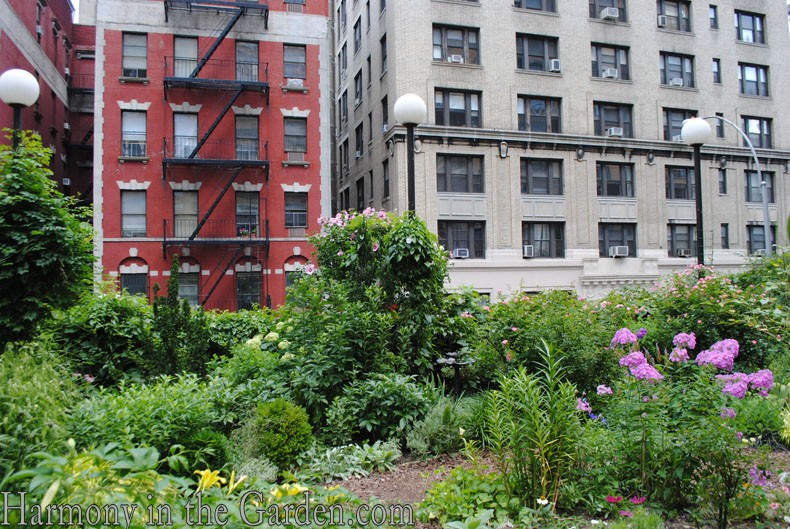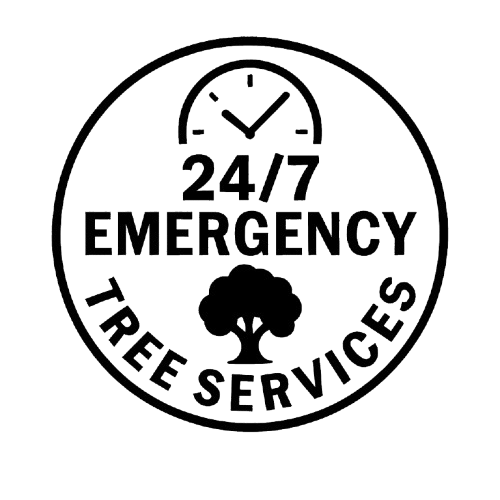Caring for trees in small NYC gardens can present unique challenges, from limited space to environmental factors like air pollution and heat islands. However, with the right approach, urban gardeners can grow healthy, thriving trees that enhance their spaces’ aesthetic and environmental quality. From selecting suitable species to maintaining soil health and managing urban stressors, this guide provides essential tips to help maximize tree growth in small NYC gardens.
Key Takeaways:
- Select Tree Species Suited for Small Spaces: Choosing compact or dwarf tree varieties, such as Japanese maple or serviceberry, ensures the tree won’t outgrow the limited space available while offering shade and beauty.
- Proper Soil Health and Watering Are Crucial: Enhancing soil with compost and organic matter promotes better root growth. Additionally, implementing drip irrigation can efficiently manage water needs without over-saturating or under-watering.
- Urban Challenges Require Strategic Care: NYC is expected to experience air pollution, high heat, and strong winds. Gardeners should take protective measures, such as wind barriers and organic pest control, to help trees flourish despite these challenges.

Choosing the Right Tree Species for Small Gardens
Choosing suitable tree species at the outset is essential to long-term development and success in a tiny NYC garden. Due to the distinct urban environment and space limitations, several factors must be considered, such as the local climate, the mature size of the tree, and its general adaptability. Below is an overview of important considerations:
Native Species
Choosing native tree species is one of the best ways to ensure that the tree can withstand the unique challenges of the urban environment, such as pollution, compacted soil, and weather extremes. Native trees are adapted to the local conditions and often require less maintenance.
Benefits of Native Species:
- They are naturally adapted to local conditions.
- Less prone to pests and diseases.
- Provide habitat for local wildlife.
Dwarf or Compact Varieties
Dwarf or compact tree varieties are ideal in small NYC gardens. These trees offer all the benefits of a full-sized tree without the risk of outgrowing their space. They typically grow slower and require less pruning, making them low-maintenance options for urban gardeners.
Advantages of Dwarf Varieties:
- Easier to maintain in limited spaces.
- Require less pruning and management.
- Provide shade, beauty, and environmental benefits without becoming too large.
Consideration of Mature Size
It’s essential to consider the tree’s mature size when selecting a species for a small garden. Even trees that seem small when purchased can grow to become overwhelming in confined areas if their total size is not considered. Ensure the tree’s height and canopy width fit within the available space once fully grown.
Factors to Consider:
- Height: Will the tree block sunlight or interfere with buildings as it grows?
- Canopy Spread: Will the branches spread too wide, causing crowding?
- Root System: Is the tree’s root system shallow or deep, and will it disrupt nearby structures?
Examples of Trees for Small NYC Gardens
Here are some popular trees that are well-suited to small spaces and thrive in NYC’s urban environment:
Tree Species | Description | Mature Size | Special Features |
Serviceberry | A native tree with beautiful spring flowers, edible berries, and vibrant fall color. | 15-25 feet tall, 15-20 feet wide | Attracts pollinators, suitable for narrow spaces, multi-season interest |
Japanese Maple | Known for its delicate, colorful leaves and graceful shape, it is ideal for small gardens. | 10-15 feet tall, 10-12 feet wide | Ornamental foliage, shade-tolerant, low-maintenance |
Dogwood | It is famous for its showy flowers in spring and colorful foliage in autumn. | 15-25 feet tall, 20 feet wide | Provides wildlife habitat, adaptable to various soil conditions |
Redbud | Displays striking purple-pink blooms in early spring, compact and ideal for urban settings. | 20-30 feet tall, 25-35 feet wide | Fast-growing, pollinator-friendly, provides spring color |
Crabapple | It offers beautiful blossoms in spring and produces a small fruit that attracts birds. | 15-20 feet tall, 15-20 feet wide | Flowering tree, wildlife-friendly, compact for urban spaces |
Soil Preparation and Health
Assessing Soil Quality
The foundation of a healthy tree begins with the soil. In small NYC gardens, soil quality can often be compromised due to urban construction, pollution, or a lack of organic material. Assessing the soil before planting is crucial to ensure it can support long-term tree growth. Nutrient-rich soil provides the necessary elements for solid roots, foliage, and overall tree health.
How to Assess Soil Quality:
- Visual inspection: Check for compacted soil, poor drainage, or a lack of organic matter.
- Soil test kit: Conduct a soil test to determine pH levels and identify essential nutrients like nitrogen, phosphorus, and potassium deficiencies.
- Physical structure: Loamy, crumbly soil is ideal for tree growth, allowing roots to penetrate quickly and absorb water.
Improving Poor Soil
If the soil quality is poor, improving it before planting is essential. Urban soils are often low in organic material and may not drain well, leading to waterlogging or root rot. Adding compost and other organic materials can make soil nutrient-rich and structurally better.
Key Ways to Improve Soil:
- Compost: Incorporate compost to increase nutrients and improve water retention.
- Organic matter: Add leaves, straw, or well-rotted manure to enhance soil aeration and microbial activity.
- Mulch: Apply mulch around the tree’s base to control temperature, retain moisture, and keep weeds out. Mulch also decomposes over time, adding further nutrients to the soil.
Soil Drainage
Poor drainage can quickly lead to waterlogged soil in small urban gardens, stunting root growth and causing rot. Proper drainage is essential in confined areas where water may not naturally disperse.
Tips to Improve Drainage:
- Loosen compacted soil: Aerate the soil by digging or using tools to break up dense layers that prevent water from seeping through.
- Install drainage solutions: To remove excess water, place gravel or perforated pipes under the tree’s planting site.
- Elevated beds or mounds: Plant trees slightly higher than the surrounding area using a raised bed or mound to prevent water accumulation at the base.
Proper Planting Techniques
Correct Spacing
Even in small spaces, trees need sufficient room for their roots to spread and their branches to receive adequate air circulation. Overcrowding trees can lead to resource competition, poor airflow, and increased susceptibility to disease.
Tips for Proper Spacing:
- Account for mature size: Ensure enough distance between the tree and other plants, fences, or buildings to accommodate the tree’s eventual size.
- Allow air circulation: Trees planted too closely may suffer from fungal issues or mold, so ensure enough space for air to flow freely around the branches.
Planting Depth
A tree’s capacity to form a robust root system largely depends on the depth at which it is planted. Planting too shallowly exposes the root system and leaves the tree open to harm or dryness while planting too deeply might suffocate the roots.
Planting Depth Guidelines:
- Look for the root flare: The point where the trunk starts to widen at the base is called the root flare. When planting, it should be slightly above the soil level.
- Avoid covering the trunk: Ensure that soil or mulch doesn’t pile up against the trunk, which can lead to rot or pest issues.
- Digging the hole: The hole must be three times wider than the tree’s root ball but only as deep as the root ball. This allows the roots to spread laterally for stability and nutrient absorption.
Watering After Planting
Proper watering is essential in the weeks and months after planting a new tree, especially in a small urban garden where the soil may dry out faster. The goal is to help the tree establish a root system that can support its growth over the long term.
Watering Tips:
- Deep, infrequent watering: Water the tree deeply to encourage the roots to grow downward. Shallow, frequent watering promotes surface root growth, which can lead to instability.
- Mulch for moisture retention: Mulching the ground around the base of the tree will assist in retaining moisture in the soil and reduce the watering frequency.
- Adjust based on weather: In hot, dry conditions, the tree may need more water, while in cooler or wetter weather, adjust the watering schedule accordingly.
Watering and Irrigation Tips
Watering Frequency
Maintaining the right water balance for trees in small NYC gardens can be challenging. Overwatering can lead to waterlogged soil and root rot, while underwatering can cause drought stress, weakening the tree. Monitoring soil moisture and adjusting your watering schedule based on weather conditions is essential for urban trees.
Tips for Watering Frequency:
- Check soil moisture regularly: Insert your finger or a moisture meter into the soil 2-3 inches deep. If it feels dry, it’s time to water.
- Seasonal adjustments: Water is more abundant during the hot, dry summer months and less during the rainy or cooler months.
- General rule: Water young trees once or twice a week, depending on rainfall. Mature trees typically need less frequent but deeper watering.
Drip Irrigation Systems
This system delivers water directly to the roots, minimizing waste and reducing the risk of over-watering. It’s especially beneficial in urban environments where water conservation is essential, and small spaces need precision watering.
Benefits of Drip Irrigation:
- Water efficiency: Delivers water slowly, allowing it to seep deep into the soil without runoff.
- Prevents evaporation: Reduces water loss, especially during hot weather, since water is delivered directly to the soil.
- Ease of use: Automated systems can be set on timers, ensuring consistent watering without manual effort.
Water Conservation Tips
Water is a valuable resource, especially in urban areas like NYC. A few simple techniques can help conserve water while ensuring your trees get moisture.
Tips for Water Conservation:
- Mulching: By retaining soil moisture, mulch at the tree’s base can lessen the watering frequency.
- Collect rainwater: Collect and store rainwater in rain barrels for irrigation in the dry seasons.
- Water early or late: Watering in the early morning or late at night minimizes evaporation and guarantees that the roots receive the water.
Pruning and Maintenance
Regular Pruning
Pruning maintains the size and shape of trees in small gardens. Frequent pruning ensures that the tree doesn’t expand beyond its designated space by helping to limit its growth. Better air circulation and sunshine penetration are also made possible, essential in crowded metropolitan settings.
Tips for Regular Pruning:
- Shape the tree: Regularly trim back branches to control the overall size and maintain the desired shape.
- Thin the canopy: Remove any excess branches to allow light and air to pass, reducing disease risk.
- Time pruning appropriately: Most trees benefit from pruning in late winter or early spring when they are still dormant.
Removing Dead or Diseased Branches
Regularly inspecting your trees for dead or diseased branches helps maintain their health. Diseases or pests may be drawn to dead branches and spread to other tree areas. Prompt removal ensures that the tree stays healthy and its energy is focused on growth.
Steps for Removing Dead or Diseased Branches:
- Inspect regularly: Check your trees every few months, especially after storms, for any signs of damage, disease, or dead branches.
- Use clean tools: When cutting diseased branches, ensure your pruning tools are clean and disinfected to prevent the spread of disease.
- Cut back to healthy wood: Remove the branch and cut it back to a healthy point where new growth can emerge.
Seasonal Maintenance
NYC experiences seasonal changes, from cold winters to hot, humid summers. It would be best to modify your tree care regimen according to the seasons to keep your trees healthy and able to adjust to their changing surroundings.
Seasonal Care Tips:
- Spring: Prune, fertilize, and inspect for any winter damage. Begin watering as the tree emerges from dormancy.
- Summer: Focus on watering, pest control, and managing heat stress. Ensure mulch is refreshed to retain moisture.
- Fall: Prepare trees for the winter by removing any weak branches that could break under snow. Reduce watering as the tree enters dormancy.
- Winter: Minimal care is needed, but trees can be protected from heavy snowfall by gently removing excess snow from branches.
Managing Urban Environmental Challenges
Air Pollution
Urban environments like NYC are prone to higher levels of air pollution due to traffic, industrial activities, and construction. Pollutants like sulfur dioxide or other particulate matter can impede tree photosynthesis, decrease their structural integrity, and increase their susceptibility to disease.
Tips for Protecting Trees from Air Pollution:
- Choose pollution-tolerant species: Some trees, such as ginkgo, honey locust, and London plane trees, are more resilient to air pollution.
- Rinse tree foliage: During dry periods, spray water on the leaves to wash off dust and pollutants, improving their ability to absorb sunlight.
- Improve air quality: Plant companion species that help filter the air, like shrubs or climbing plants, which can absorb and trap pollutants before they reach the tree.
Heat Islands
Urban heat islands, caused by buildings and paved surfaces that trap heat, can significantly raise temperatures in city environments, making trees more susceptible to drought and heat stress. This phenomenon is particularly challenging in compact areas like small NYC gardens.
Strategies to Combat Heat Island Effects:
- Mulching: Apply thick mulch to the tree’s base to keep soil temperatures lower and moisture retention in place.
- Shade cloths: Use temporary shade covers during heatwaves to protect young trees from intense sunlight.
- Water retention: Invest in drip irrigation systems or install water-absorbing crystals in the soil to help trees maintain hydration in hot weather.
Wind Protection
NYC’s narrow streets and tall buildings can create wind tunnels that expose trees to sudden and strong gusts. Wind damage can harm tree branches and cause the tree to lose moisture quickly.
Wind Protection Tips:
- Use wind barriers: Plant wind-tolerant shrubs or erect fences to block or redirect strong winds.
- Support young trees: Use stakes and ties to provide extra stability to young or newly planted trees until they can stand independently.
- Prune carefully: Cut any weak or too-long branches that could break in a storm or strong winds.
Fertilizing and Pest Control
Appropriate Fertilizers
Urban trees often need access to natural nutrients in forest or rural environments. Fertilizing trees in small gardens helps replenish these nutrients and supports their growth, especially in compact or nutrient-poor soils.
Recommended Fertilizers:
- Balanced fertilizers: A general 10-10-10 NPK (nitrogen, phosphorus, potassium) fertilizer works well for most trees.
- Slow-release fertilizers: These deliver nutrients over an extended period, reducing the risk of over-fertilization and promoting steady growth.
- Organic fertilizers: Compost, bone meal, and seaweed extracts are natural options that enrich the soil without chemical additives.
Fertilizer Type | Best For | Nutrient Composition |
Balanced (10-10-10) | General tree health | Equal parts N, P, K |
Slow-release granules | Long-term nourishment | Gradual nutrient release |
Organic compost/bone meal | Soil enrichment | Nitrogen, calcium, trace minerals |
Pest Management
Urban environments can create favorable conditions for pests like aphids, mites, and scale insects. These pests feed on trees, weakening them and making them vulnerable to disease.
Pest Management Options:
- Organic solutions: Neem oil and diatomaceous earth can control pests without harming beneficial insects.
- Chemical treatments: Use systemic insecticides only when necessary, and choose those specifically designed for the pests affecting your trees.
- Attract beneficial insects: Companion plants like marigolds, lavender, and dill can attract predatory insects that naturally control pest populations.
Disease Prevention
Urban trees are susceptible to diseases caused by fungal spores, bacteria, and viruses due to the stresses of pollution, compacted soil, and crowding. Proactive disease prevention is critical to keep trees healthy.
Disease Prevention Tips:
- Monitor regularly: Check your tree frequently for early signs of disease, like molds or unusual growth.
- Sanitize tools: Always disinfect pruning tools between uses to prevent the spread of pathogens.
- Improve air circulation: By avoiding moisture buildup and pruning appropriately, one can inhibit the growth of fungi.
Maximizing Tree Health with Companion Plants
Ground Covers and Shrubs
In small gardens, companion planting can help enhance soil health and protect tree roots by reducing moisture evaporation and preventing erosion. Ground covers and shrubs also create a more resilient ecosystem by supporting beneficial soil organisms.
Recommended Ground Covers and Shrubs:
- Clover: Fixes nitrogen into the soil, enriching it for nearby trees.
- Hostas: Tolerate shade and help retain soil moisture around tree bases.
- Creeping thyme: Offers ground cover that supports healthy soil aeration and moisture retention.
Flowering Plants for Pollination
Planting flowering companion plants encourages pollinators like bees and butterflies to visit your garden, supporting the ecosystem and enhancing the overall health of your trees.
Examples of Pollinator-Friendly Plants:
- Lavender: Attracts bees and butterflies, improving pollination.
- Echinacea (coneflower): Provides nectar for pollinators and benefits nearby trees by promoting biodiversity.
- Salvia: A drought-tolerant plant that encourages pollinator activity and supports a healthy garden environment.
Examples of Companion Plants
Companion Plant | Best For | Benefits to Trees |
Lavender | Pollination and pest control | Attracts pollinators, repels pests, and adds visual interest. |
Ferns | Shaded, moist environments | Retains soil moisture and supports ground-level biodiversity. |
Hostas | Ground cover in shaded areas | It prevents soil erosion, enhances soil quality, and conserves water. |
FAQs
What are the best tree species for small NYC gardens?
Native trees like serviceberry, Japanese maple, and dogwood are great for small spaces, as they are compact and adapt well to urban environments.
How often should I water trees in a tiny NYC garden?
Depending on the weather, trees should be watered once or twice a week. Use a drip irrigation system to maintain consistent moisture without over-watering.
How can I improve my garden’s soil quality?
Compost and mulch are examples of organic materials that can be added to the soil to help retain water and enhance nutrients.
When is the best time to prune my trees in NYC?
Pruning most trees in late winter or early spring is ideal, as it helps control growth and removes dead or diseased branches before the growing season begins.
What should I do if my tree shows signs of disease or pests?
Utilize natural pest management techniques like neem oil or introduce helpful insects. See a local arborist for advice on appropriate treatments for illnesses, as they vary depending on the problem.
Conclusion
Caring for trees in small NYC gardens presents unique challenges, from space limitations to urban environmental stressors like pollution and heat. However, urban gardeners can cultivate thriving trees that enhance their garden and the surrounding environment by carefully selecting suitable tree species, preparing and maintaining healthy soil, and using adequate watering, pruning, and pest control methods. Companion planting further supports tree health, while strategies for mitigating urban heat and wind stress ensure trees can flourish even in the harshest conditions. With thoughtful planning and regular care, trees can provide beauty, shade, and biodiversity to even the most miniature urban gardens.




